Animal by-products and carcasses
Food and livestock production produces large quantities of animal by-products, which can spread diseases. Animal by-products are any animal products that are not used in foor for humans. These include dead animals, food waste, and slaughter by-products.
Proper handling and supervision of animal by-products is an important part of animal disease prevention and controlling possible epidemics. Facilities that use, handle, store, or dispose of animal by-products and their operators must have approval from, or be registered with, the competent authorities.
Animal by-product control covers:
- Food establishments in which by-products are being separated, collected, classified, or sent to be processed or diposed of
- By-product establishments
- Establishments which produce animal feed
- Disposal of animals that died or were put down at stables or animal farms
- receiving and handling carcass notifications
By-product establishments
Municipal veterinarians monitor by-product establishments by, for example, approving establishments in their area. By-product establishments are incinerators, co-incineration plants, and storage facilites for when the product is waiting to be incinerated or taken to an approved landfill. Facilities that temporarily store, process, or sort unprocessed by-products are also considered by-product establishments.
Burying animal by-products
In Pirteva’s control area, it is prohibited to bury carcasses of ruminants, pigs, poultry or fur animals, pig slaughter by-products, and other by-products speficied in by-product laws.
These kinds of by-products must be taken to an approved by-product establishment to be processed or destroyed.
The municipal veterinarian monitors the collection and burial of carcasses in their area. Inspections are conducted in cases of suspected violations or in conjunction with other inspections at the same location.
You must keep record of buried by-products, including the number of carcasses and their classification and species, and the date and location of the burial. The records must be kept for 2 years and presented to the authorities when requested. You do not need to keep record of pet burials.
Using carcasses as wild animal feed/bait
You can use by-products listed below for feeding wild animals, if it does not cause health hazards, environmental pollution, or a risk of spreading animal diseases. Notice that using household foodwaste as bait or feed is not permitted!
The following animal by-products can be used as carcass feed:
- dead pigs, reindeer, horses, poultry, and carcasses of under 12 month-old cattle
- by-products from slaughterhouses and cutting plants of the aforementioned animals
- farmed fish
- by-products from the processing of fish products
- carcasses and slaughter by-products of elk and other wild animals
The use of carcasses is regulated by various laws, including the Waste Act, Environmental Protection Act, and the Land Use and Building Act. Abiding by these regulations is a prerequisite to using carcasses.
Notification procedure
If you use animal by-products to feed wild animals, you must notify the municipal veterinarian of the area where you want to keep the carcass. The notification must be sent in written form before commencing with carcass feeding.
According to the animal by-product law 783/2015 a person using animal by-products to feed wild animals must send a monthly report of the number of by-products taken to the feeding site. You do not have to report the use of by-products from wild animals. You must report to the municipal veterinarian of the area where the by-product is collected from, as well as the veterinarian who’s area the by-products will be used in. You must keep records of the use of by-products as wild animal feed. The records will be checked during inspections of carcass operations.
Löysitkö mitä etsit?
More information
By-product forms and guidelines – The Finnish Food Authority
Ethical guidelines for using carcasses (pdf) (in Finnish)
